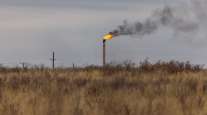OMB Reviewing EPA Rule to Allow Navistar Engine Sales
This story appears in the Aug. 13 print edition of Transport Topics.
The U.S. Environmental Protection Agency forwarded to the Office of Management and Budget on Aug. 4 a final rule that could allow Navistar International Corp. to continue selling engines that do not meet 2010 emission standards.
An EPA staffer declined to answer questions about the rule, which is titled “Nonconformance Penalties for On-Highway Heavy-Duty Diesel Engines.”
“It’s still under internal interagency review,” the staffer said.
An OMB staffer, meanwhile, said, “We don’t comment on rules under review.”
But Navistar spokeswoman Karen Denning told Transport Topics that the transfer of the rule to OMB is “very positive news.”
Denning also confirmed to TT that Navistar no longer is pursuing EPA certification for an engine using only exhaust gas recirculation (EGR) technology.
EPA in January issued an interim rule that would allow Navistar to pay a penalty of $1,919 for each engine sold that did not meet federal emissions standards. But in June, the U.S. Court of Appeals for the District of Columbia Circuit vacated the rule, in part because EPA did not provide for public comment or formal notice (6-18, p. 1) before issuing its rule.
“The court has vacated the interim rule, and we continue to build and ship trucks using a combination of credits and [nonconformance penalties], and that’s what the final rule is expected to solidify — the use of NCPs going forward,” Denning said. “So, clearly, we’re encouraged by that.”
The appeals court issued a ruling on a lawsuit filed by Cummins Inc., Daimler AG and North American units of Volvo Group, which make Volvo and Mack trucks.
EPA issued its final rule only days after Navistar announced that it now planned to use Cummins’ selective catalytic reduction (SCR) technology in its next generation of engines and will begin offering Cummins 15-liter engines in some truck models (8-6, p. 5).
Navistar announced its initial move away from EGR-only engines during July, when it unveiled what it called a new engine technology, In-Cylinder Technology Plus, which incorporates SCR.
The company had submitted an EGR-only, 13-liter engine for EPA approval on Jan. 31 and resubmitted that application in May.
“Our intent is to seek certification on a MaxxForce 13-liter with ICT+ technology,” Denning said. Until then, the company will continue to sell its current EGR-only engines through the use of nonconformance penalties and credits, Denning said.
Analyst Walter Liptak wrote to clients of Barrington Research Associations Inc. that his firm believes Cummins is “a very good supplier” of SCR aftertreatment systems and 15-liter engines, but Barrington still expects Navistar’s transition from its previous EGR strategy to its new SCR path to be “a painful one.”
“We suspect that the [Cummins] ISX15 will help Navistar bridge the gap of time needed to get its heavy-truck engines certified by the EPA,” Liptak said.
In a note to clients of Sterne Agee Group Inc., Birmingham, Ala., analyst Jeffrey Kauffman said Navistar’s agreement with Cummins “should largely eliminate customer uncertainty” and is likely to allow Navistar to recapture some amount of lost market share.
Meanwhile, Denning said Navistar has a “very intense focus right now on reducing expenses,” including combining certain operations and controlling discretionary spending.
She also confirmed published reports that Navistar recently had offered a voluntary severance package to the majority of its 6,300 U.S.-based, full-time, salaried employees.
She said “the last lever” the company would turn to in its effort to reduce costs would be involuntary job cuts. In a filing with the U.S. Securities and Exchange Commission, the company said it expects any workforce reduction to be completed during the fourth quarter.
“All of these actions are designed to return the company to profitability,” Denning said. “Our first two quarters were not acceptable performance, and we need to be laser-focused on having a cost structure that’s appropriate to the business.”
Navistar previously said it expects a pretax loss of $105 million to $145 million for its fiscal third quarter ended June 30. It has not yet announced those results.
In a separate development, MHR Fund Management, run by investor Mark Rachesky, has increased its stake in Navistar to 14.99%, just below the 15% level that would trigger the company’s poison pill plan (6-25, p. 3).
The fund said in an SEC filing that it purchased 25,000 additional shares on Aug. 2.
MHR is Navistar’s second-largest shareholder behind Franklin Resources Inc., which boosted its stake above 15% before the poison pill was adopted. Navistar’s third-largest shareholder is billionaire Carl Icahn. Combined, the top three shareholders own about 48% of the company.




